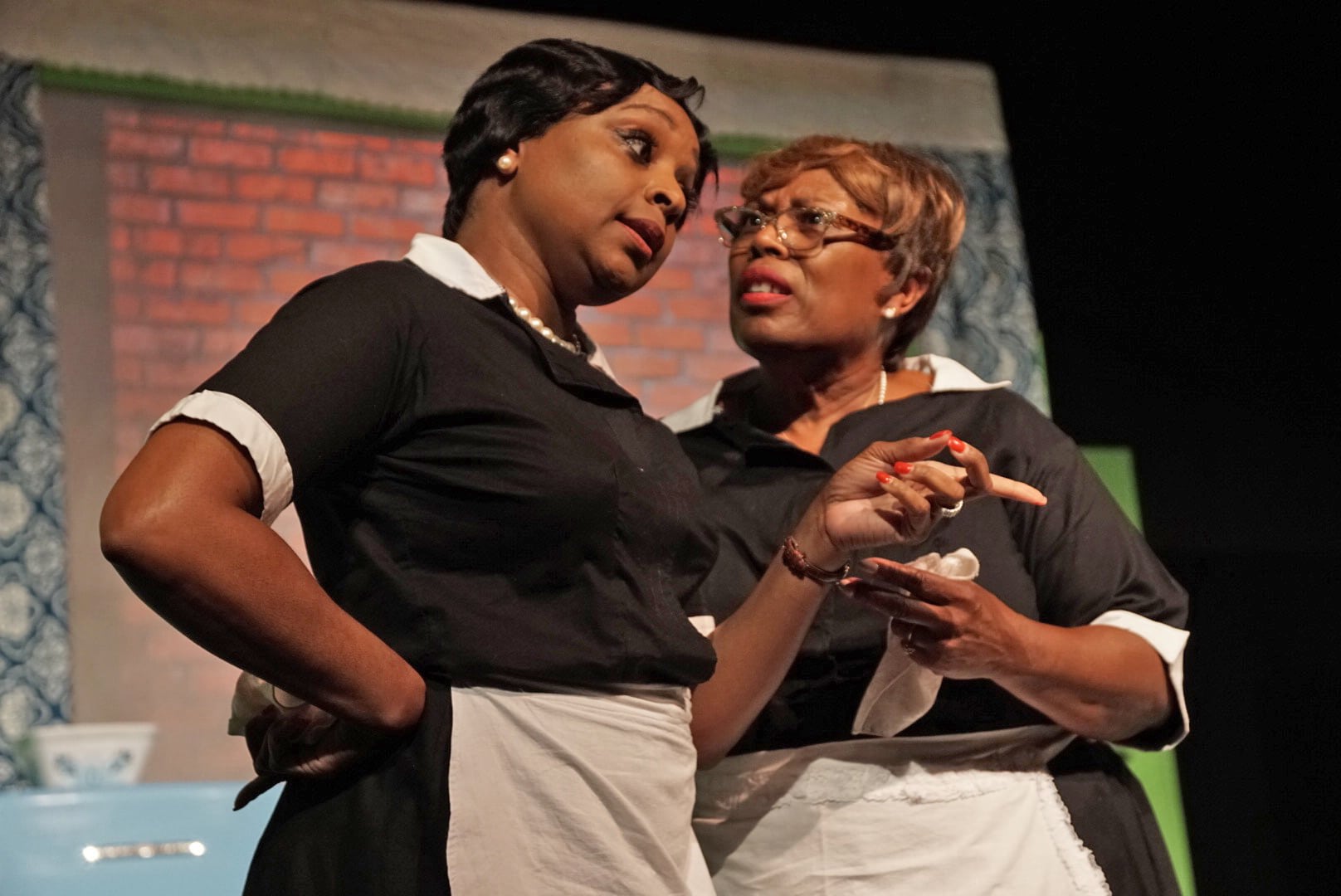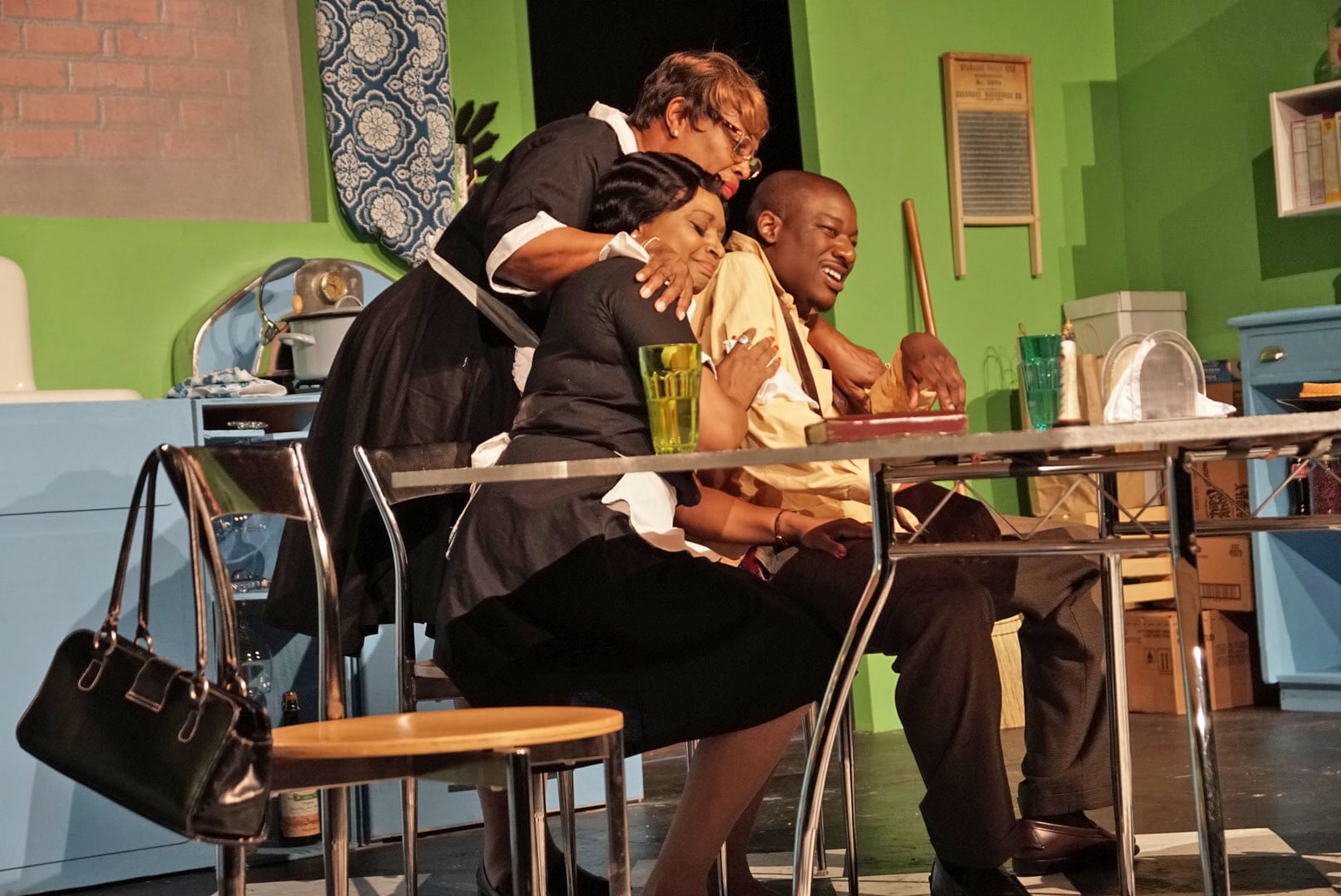Happy Ending is a one-act satirical comedy written in the 1960s by Douglas Turner Ward, co-founder of the Negro Ensemble Company. He had written an op-ed for the New York Times called “American Theatre: for Whites Only?” that prompted funding and other support for the new company. The NEC’s mission was to create theater by black playwrights from the black point of view primarily (not exclusively) for black audiences. It’s easy to forget what a radical notion about representation that was back then. For that memorial reason alone, the revival of Happy Ending just opened at Anacostia Playhouse is well worthy of attention.
But do not come expecting a museum piece—because this Happy Ending is fresh, funny, and bursting with song-and-dance pizzazz. Yes, song and dance! Director Ella Davis has juiced up this modern classic with a riot of musical numbers. Some of the tunes that embellish the zany storyline are familiar (“What a difference a day makes”); more are brand-new. As composed by Marion Johnson and performed by a spirited cast with big voices, they get the joint jumping. And by the time of the show’s happy ending (no spoiler: the title gives it away), Ward’s comic gem has jumped out of history into the hysterical present.

Happy Ending tells the story of two shrewd black maids, both sisters: Vi (Krinessa Pinkett) and Ellie (Jennifer Lee). For years they have worked for a wealthy white couple, the Harrisons. As the play opens they have just been let go, though, because Mr. and Mrs. H are getting a divorce. Vi and Ella are beside themselves with sobbing. And the reason for their over-the-top weeping is the comic twist of the play: All this time they have been engaged in a cagey embezzlement scheme, lifting food, clothing, and other items of value from the Harrisons, who own too much to notice. “We’re only getting back what we deserve,” says one. It’s a kind of DIY reparations scheme, and it touches a nerve of economic injustice that Ward ingeniously connects to the funny bone.
The play takes place in a ’50s Harlem kitchen—stylish in Set and Lighting Designer P. Precious Porter’s rendering—with green walls, blue appliances, black-and-white checkerboard floor, and, as we learn, a freezer and pantry packed with pilfered food. The interplay between Pinkett and Lee is priceless; their broad comedic skills pull us into Vi and Ellie’s hilarious pathos right away.

Their nephew Junie enters (Greg Watkins), having gone for a job he didn’t get. Somewhat surprisingly, Watkins, who cuts a charmingly dapper figure, begins doing smooth dance moves to a song of resilience and self-determination—”I’m black and I’m proud. I’m a strong man walking,” he belts—and even more surprisingly, he plays it straight to the audience. From then on, the show lifts out of fourth-wall staging, shifts into musical comedy gear, and takes off in a flurry of feel-good mirth.
A fourth character, Ellie’s beau Arthur (Charles Harris), shows up in time to join in a showstopping celebratory musical closer when the story’s promised happy ending is revealed. It’s hard to imagine Happy Ending ever ending with more upbeat joy.

Happy Ending is a co-production between the Anacostia Playhouse and the All About the Drama Theater Group. Throughout, Costume Designer Luqman Salim’s clothes reflect the period but with a subtly fresh eye, as befits the entire production’s inventive reimagining.
Before the play proper begins, period jazz plays as we see a slideshow of black-and-white photographs of ’50s Harlem street scenes and notables such as Duke Ellington, Louis Armstrong, Lorraine Hansberry, Count Basie. It’s a very well crafted flashback by Sound and Projection Designer Tewodross Melchishua Williams that aptly locates the story in its time and place and soberly reminds us that the Civil Rights Movement was still just starting out.
These projections are followed by a less successful audio-visual enhancement, a six-minute film called “A Day in the Life of Vi & Ellie—Meet the Harrisons.” In it, Writer/Director Davis stages the backstory scene in which Vi and Ellie are dismissed. Only referred to in Ward’s script, that scene is here played out literally, and somewhat stiffly, with Pat Martin appearing as Mr. Harrison, Adele Robey as Mrs. Harrison, and Pinkett and Lee as Vi and Ellie. While the film does spell out the story’s inciting action (and arguably makes the play’s early exposition more accessible), the flat, forced tone misleads our expectations because the play that follows is actually a cunning bundle of fun.
Running Time: Approximately 70 minutes, with no intermission.
Happy Ending plays through August 25, 2018, presented by the Anacostia Playhouse and All About the Drama Theater Group at Anacostia Playhouse – 2020 Shannon Place SE, in Washington, DC. For tickets, purchase them at the door, or online.




